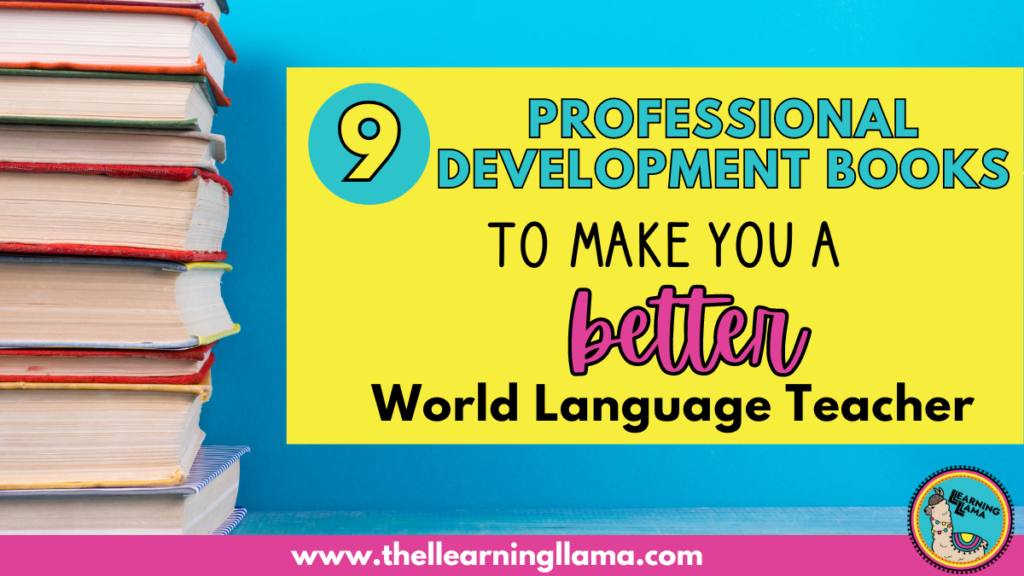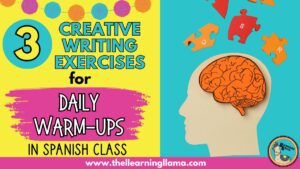As world language teachers, we are sometimes forced to sit through professional development sessions that have nothing to do with us… state testing, core academic subjects, etc. And attending world language specific professional development can be costly. So, from the comfort of your home or classroom, check out these 9 Professional Development Books to Make You a Better World Language Teacher.
One thing almost all world language teachers have in common – we are always looking for ways to improve our lessons, be better teachers, and enhance our own language skills. These books are recommended by myself and fellow world language teachers who want to improve their second language teaching methods and their own language skills.
Professional Development Books about Second Language Teaching and Acquisition
If you’re looking to improve your pedagogy, teaching style, and classroom practices, then this first list of books is for you. It is like attending professional development sessions from the best professors, authors, and teachers in the world of second language acquisition. But you get to keep the book and reference it over and over again!
Here are recommendations I’ve gathered from language teachers (and myself) based on what books helped us improve our teaching methods and classroom practices.
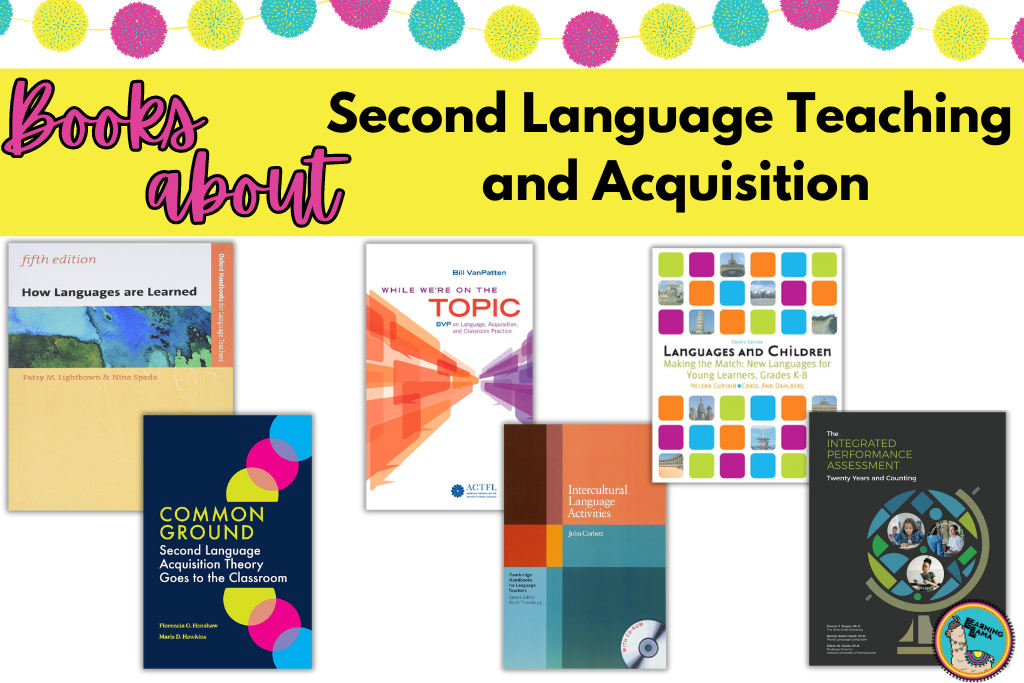
How Languages are Learned
This book relates theories of first and second language acquisition to what actually goes on in the classroom. I have seen tons of Spanish teachers recommend reading this text book if you are looking for practical ways to apply SLA techniques in the classroom. It includes case studies and evaluations so you get a practical understanding of the SLA techniques before applying them to your students.
Common Ground
If you’re looking for another practical book, Common Ground is a great option. Written by accomplished language teachers who understand the challenges and opportunities in communicative language practices, you’ll really relate to this book. This book is also especially great for teachers ready to break from the use of a textbook and traditional grammar drills and apply communicative approaches.
While We’re on the Topic
This language acquisition and classroom practice book addresses six principles related to communication, language acquisition, and tasks and activities. I love teaching with task-based language teaching methods, and one of the 6 principles is that tasks should form the backbone of the communicative curriculum. Tasks are authentic and give students practical ways to use the language in the classroom setting.
Intercultural Language Activities
This is a short book, filled with ideas for teaching intercultural competence. You may not learn about the pedagogy and reasoning behind intercultural competence, but you sure will come away with TONS of activities to use in your classroom. This is the only textbook that I thought was worth saving from my Masters in Foreign Language Teaching Program. “Intercultural Language Activities” by John Corbett. It is filled with practical intercultural activities for 14 cultural areas.
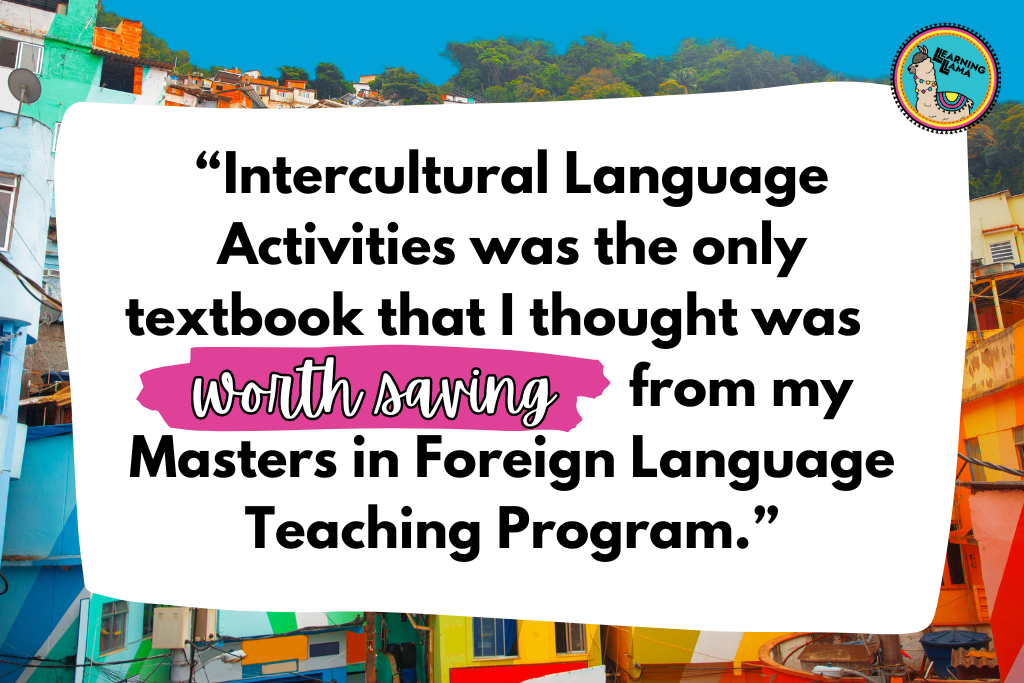
For example, when doing a Socratic Seminar, rather than just have basic questions like “talk about the accomplishments of your assigned famous Hispanic person,” this book offers an authentic scenario. “You are all in an airplane that is malfunctioning, and there is only one parachute. Who deserves it the most? Who can make/has made the most impact on the world?” Now talk about a FUN and engaging Socratic Seminar discussion.
Languages and Children: New Languages for Young Learners
If you teach younger students, particularly K-8, then the book Languages and Children is a great read! Still with a focus on communicative teaching like the other books that I recommend, this one focuses on the younger students. There is of course SLA theory, but also practical ideas for working with young students in language classrooms or immersion classrooms. Readers love how this book recommends activities and games to make language learning fun for the youngest learners.
The Integrated Performance Assessment: Twenty Years and Counting (Troyan, Adair-Hauck, Glisan)
In my grad school program, Masters of Foreign Language Teaching at Michigan State University, I read a lot of articles and professional development books by Bonnie Adair-Hauck, particularly about the use of Integrated Performance Assessments (IPAs). This book is an all-encompassing read about the use of IPAs.
Since learning about IPAs, I have been a huge proponent of using them at the end of each unit to assess students’ language proficiency. If you’re curious about implementing IPAs into your classroom, this book guides you in designing, implementing, and grading this three-part proficiency based assessment. If you’re just looking for a quick guide, I’ve written a blog post, highlighting my classroom experience with IPAs.
Books to Improve Your Spanish
I am not a native speaker. I know there is always room for growth in my language abilities. But since I started teaching upper levels, I have had more “practice,” using the target language in my lessons. However, I do know that this alone is not enough to sustain my language skills, and especially when you teach lower levels, you tend to use more basic, comprehensible language for those students. Here are some books to help you improve your Spanish language skills.
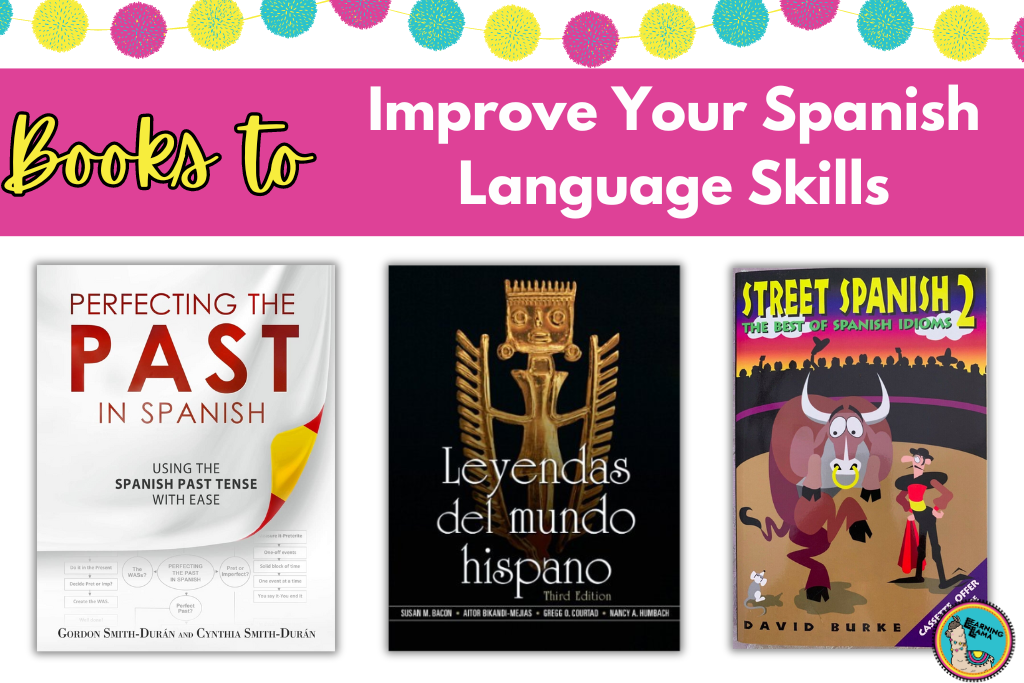
Perfecting the Past
My first teaching job was as a middle school Spanish teacher for 6th and 7th grades. But, when that year was up, I went to a different school and was hired to teach Spanish 3, a course that had a heavy focus on teaching the preterit vs. imperfect (in a communicative way). Now, I am not a native speaker, and I have never studied abroad. At this point in my career, I had a lot of room to grow in my own Spanish language skills. I could explain the difference between preterit and imperfect, but did I use them perfectly every time? Absolutely not!
So, to ease my anxieties about teaching upper level Spanish courses, I purchased this book: Perfecting the Past in Spanish, and it was such a good decision. I learned more about the past tense from this book than any other text book. It breaks down the past tense really well into simple concepts. I had many “aha” moments when reading this book and loved the practice examples. I became much more confident in my Spanish language abilities after using this book.
Then, when you’re ready to teach this concept to your students, check out my Foolproof Guide to Teaching the Preterit vs. Imperfect to Spanish Students.
Street Spanish 2: The Best of Spanish Idioms
I picked this Street Spanish 2 book up at a library book sale and have found it to be really interesting! Idioms are something that we are generally not taught in the classroom. So, as a non-native speaker, I have virtually no knowledge of idioms. I enjoy reading these and doing the practice activities to familiarize myself with them.
As a bonus, you could choose some interesting, useful phrases and do an “Idiom of the Week” with your upper level students. Since idioms are not easy to memorize or used often, one a week is sufficient to not overwhelm them. Try to incorporate it into your lessons, do nows, bulletin board, etc.
I even created a fun Spanish idioms bulletin board for my advanced students. It served as a reference and something fun for them to read and try to incorporate. You could create something similar with your favorites or do one idiom per week.
Novels and Short Stories
You can of course greatly improve your Spanish skills by reading novels or short stories in Spanish. Even some of your favorite authors that write in English may have their books translated into Spanish, which is a great way to enjoy reading. If you’re looking for books by Spanish authors, I’ve enjoyed books by Isabel Allende, Carlos Ruiz Zafón, and Laura Esquivel.
As a mom, I rarely get time to myself, so if I do, a quick read is best for me. I enjoy reading short stories and legends from various Hispanic countries. I picked up this book, Leyendas del mundo hispano, at a library book sale, and it is filled with myths and legends, vocabulary, and comprehension questions for each story.
Comment below with any reviews of these professional development books or add to the list! What professional development books have you read that have changed you as a teacher?
This post may have affiliate links. If you make a purchase from these links, I may receive a small commission. Thank you for supporting me, a fellow educator!

